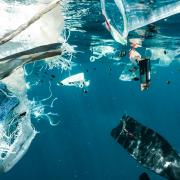
- Around half of the CO2 emitted since 1750 has been in the last 40 years.
- Water pollution kills around 10,000 people around the world every day.
The unprecedented climate emergency that we are currently facing seems far more serious than we may think. Thus, the ‘biggest ever’ climate change protests are occurring around the world with their sole aim: to call for our attention and help in order to prevent the climate crisis from escalating further. Such example is an environmental group called Extinction Rebellion. As these climate protests are reaching their apex, such as halting flights, reports are frequently presented in the media while some argue that they should stop disturbing the “innocent” citizens. Even in Surrey, on September 20th, hundreds of young students as the members of “Global Strike 4 Climate” gathered in Guildford and marched through the streets - for a “strike like never before.”
By spectating these recent climate acts, I became inclined to acknowledge more about the factors and the degree of threats that we are posing to our climate, which brought me the conclusion that we can never said to be “innocent.”
However, just as staggering as those facts listed above, is fashion being the world’s 2nd largest polluter. In particular, numerous reports have underscored that manufacturing jeans poses a detrimental environmental destruction on a severe scale. Indeed, Jeans are one of the few clothes that we tend to keep for a long time, but how do jeans incur such significant environmental costs to our society?
The main problems associated with the production of jeans are said to be the consumption and the pollution of water. The processes of weaving, dyeing and washing used to produce a single pair of jeans require about 7000 litres of water which a single family can use for roughly a week. Also, during the production of denim, intensive amount of chemical dyes are used to “acid wash” the jeans. Subsequently, the dye wastage is automatically discharged untreated into the surface water, turning the ocean into artificially diffused indigo-blue.
Therefore, more natural and sustainable methods in terms of manufacturing jeans are desperately in need if we do indeed care about our earth. However, the easiest way to reduce its environmental cost is on us : the people. As eco-conscious consumers, we should minimise the purchase of clothes, especially jeans, that would potentially pose significant threats to the environment.
“The UK could save around 3 billion per year from the cost of the resources we use to make and clean clothes if we change the way we supply, use and dispose. This will reduce carbon, water, and waste footprints of clothing consumption by 10-20% each.” According to Clothes Aid Charity.
Here is my final question. Would you still head out into the upcoming sales regardless of your brimful wardrobes?



























